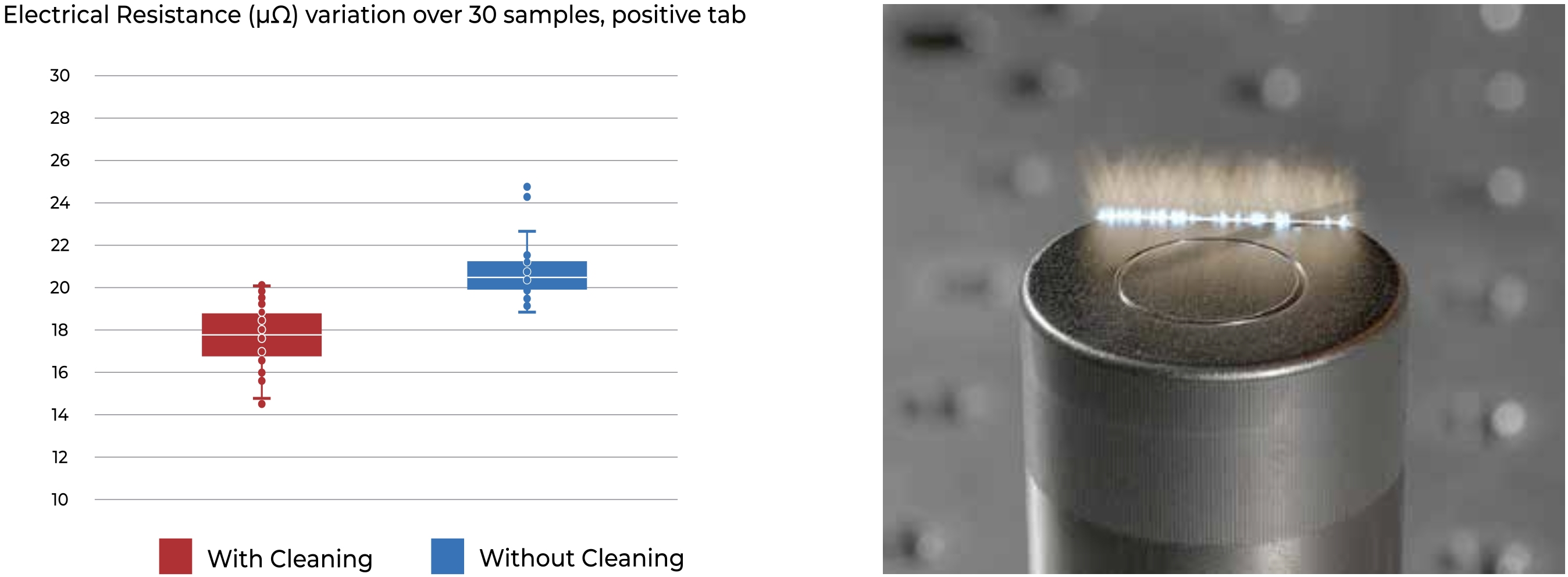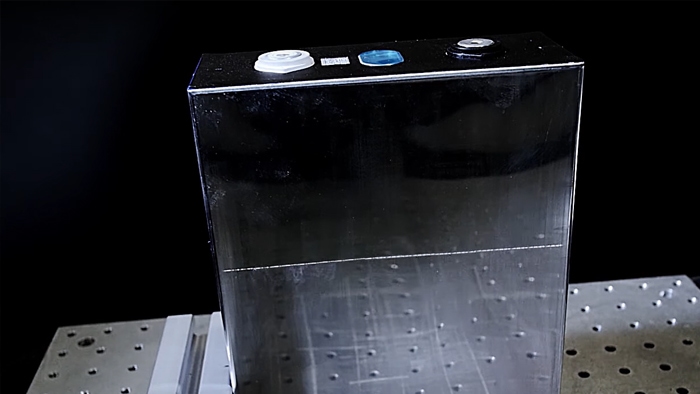Battery Laser Cleaning
CLEANING FOR BONDED COMPONENTS
Laser cleaning is extremely useful for battery parts that require bonding preparation. Today’s EV manufacturing processes involve an increasing number of adhesives, sealants, pastes, potting components, gap fillers, and encapsulants. They are used to add thermal, structural, sealing and damping features to the battery. By removing contaminants before bonding or treating batteries, it improves the chemical properties that hold the pieces together and expands the lifespan of the EV battery. With new structural battery technologies, the bonding quality is even more critical as it is now part of the safety of the vehicle.
Laser cleaning is the best surface preparation solution recommended by the most important adhesive manufacturers. Cleaning zones can be positioned in a very flexible manner for a wide range of part sizes and shapes, allowing very efficient cleaning at high production rates.
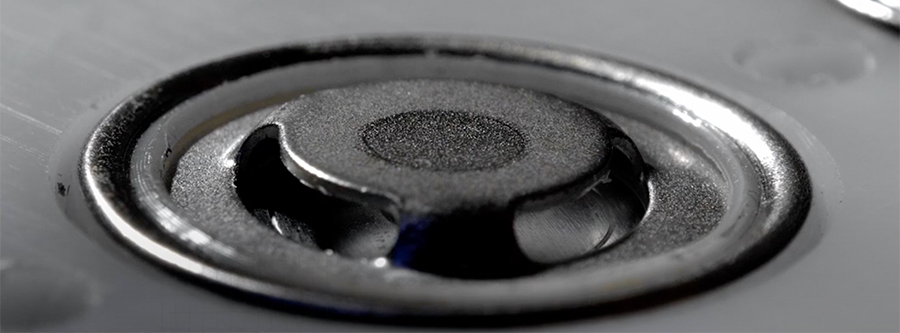
CLEANING FOR ELECTRICAL CONTACT
|
Laser cleaning is a quick and precise technology used to remove coatings and contaminants like varnish, epoxy, oil, and other coating on battery busbars, motor winding terminals, and other inductors. |
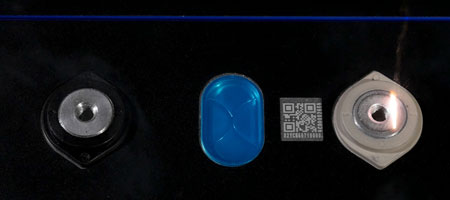
|
CLEANING FOR ULTRASONIC BONDING: 99.99% GOOD YIELD
In battery packs, there are hundreds or even thousands of welds on the cells and structure. Busbars, cell tabs, and other various electrical connections are all critical for the good operation of the battery. Laser cleaning guarantees that every single ultrasonic weld is perfect, optimizing the quality of the electrical contact and the overall weld strength.
21700 CYLINDRICAL CELL CLEANING AREA EXAMPLE
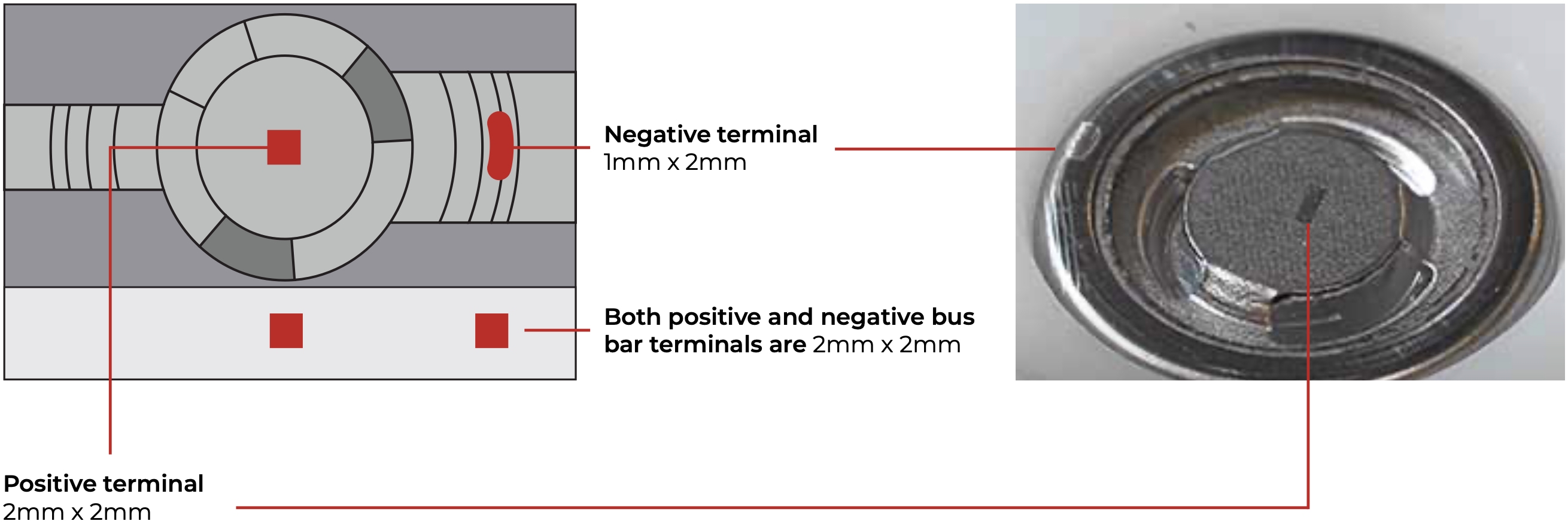
LASER CLEANING TIMES FOR DIFFERENT NUMBER OF CELLS
| CYCLE TIME (SEC) | ||||
|---|---|---|---|---|
| Number of cells | 30W | 50W | 100W | 200W |
| 120 | 11.5‑13.0 | 8.5‑10.0 | 6.2‑7.7 | 5.1‑6.6 |
| 240 | 23.1‑26.1 | 17.0‑20.0 | 12.4‑15.4 | 10.1‑13.1 |
| 480 | 46.1‑52.1 | 34.0‑40.0 | 24.8‑30.8 | 20.3‑26.3 |
| 960 | 92.2‑104.2 | 67.9‑79.9 | 49.7‑61.7 | 40.6‑52.6 |
For each range, the longer times include the scanner repositioning.
WATER CONTACT ANGLE TEST RESULTS
The water contact angle is a standard, proven test to validate surface cleanliness. Our tests demonstrate outstanding cleaning results.

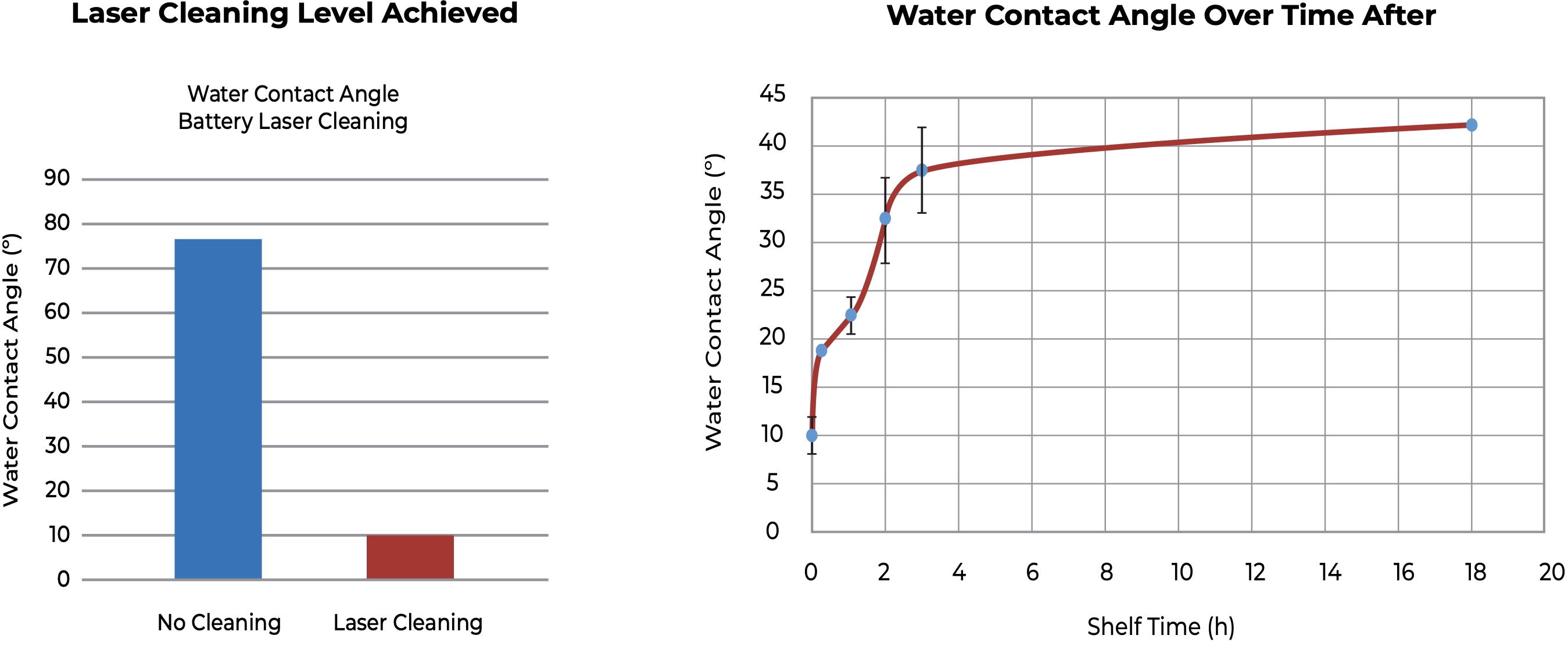
CLEANING TO IMPROVE WELD MONITORING STABILITY
Dynamic Laser Weld Monitoring (LWM) is used in battery production lines to ensure every single weld in the battery is good. These devices use reflected and emitted radiation from the weld to determine if the weld is good. They can detect different types of weld defects such as gap or contamination.
Laser welding is much less sensitive to contamination than ultrasonic bonding, but surface residues of varying thickness (such as oil and oxide) can still generate different signals that lead to false negatives, where a weld defect is detected where none exists. Laser cleaning of cell tabs before laser welding has been shown to not only help produce good welds every time, but also significantly reduce the amount of false negatives reported by LWM devices.

LASER CLEANING EFFECT ON THE ELECTRICAL RESISTANCE OF WELDS
Laserax performed tests to show effects of laser cleaning on the electrical resistance of welds. We used a 100W pulsed fiber laser to clean surfaces before tab-to-busbar welding. Laser cleaning guarantees the best yield strength when welding. It delivers 2x better overall process capabilities (Cpk) when compared to alternative cleaning methods. Higher quality equals less or no rework to optimize overall process throughput.
- Minimal heat loss
- Improved battery life
- Better thermal management
